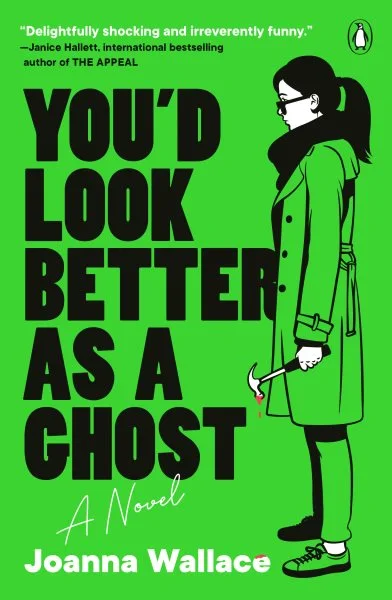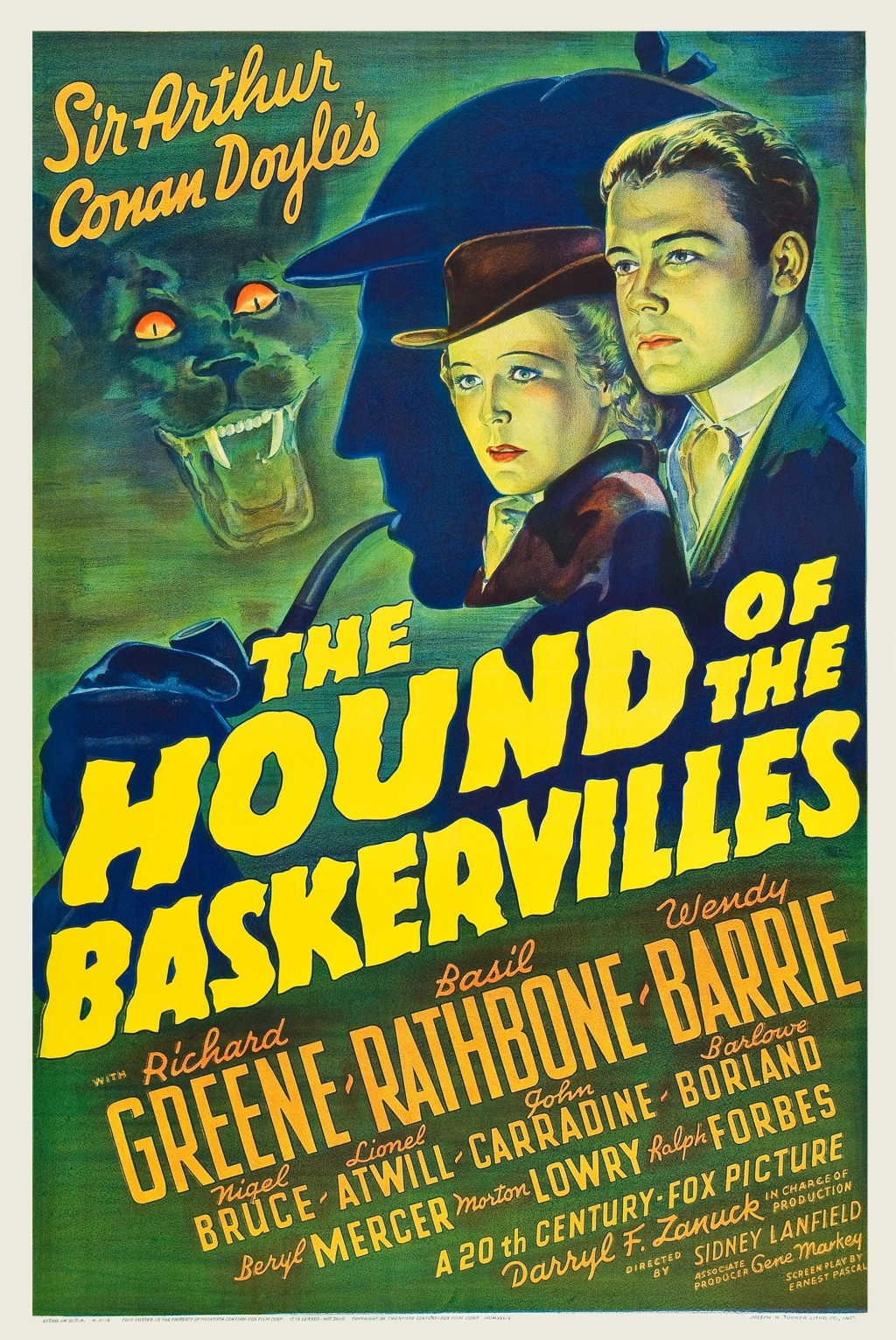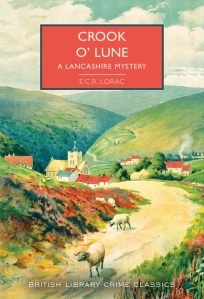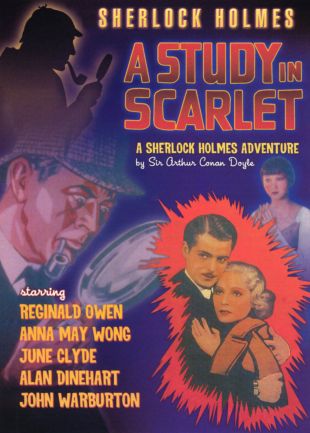If you follow me on Twitter you may have seen that I found myself in a bit of confusion about exactly what I had planned to follow up on my Columbo posts. Well, after much thinking and feeling inspired by the recent discussion between Jim and John about magic in detective novels in the In GAD We Trust podcast, I decided it would be fun to take a look at and discuss Jonathan Creek.
Unlike Columbo I come to these having seen them all before though. I remember watching these episodes together with my family when they first aired. This first season however is probably the one I remember least – partly because I was much younger when it broadcast but also because, until recently, the US BritBox service only offered the second, third and fourth series.
I look forward to rediscovering these stories over the next few weeks and chatting about them with you.
Episode Details
First broadcast May 10, 1997
Season One, Episode One *
Followed by Jack in the Box
Written by David Renwick
Directed by Marcus Mortimer
* Originally broadcast as a single ninety minute episode – it is now often split into two episodes.
Key Guest Cast
Our victim is played by Colin Baker, the Sixth Doctor in Doctor Who. He had previously played Paul Merroney, a ruthless banker in The Brothers.
Anthony Head was not intended to be a guest cast member – his role of the magician Adam Klaus was supposed to be an ongoing one. The filming of this show overlapped with his casting as Giles in the fantasy TV show Buffy the Vampire Slayer. He is replaced in the show’s second season by Stuart Milligan.

The Verdict
This episode does the important work of establishing the characters and their relationship well. Unfortunately the case is not particularly compelling and has a rather underwhelming conclusion.

A note: The thoughts below, while not explicitly revealing the solution, may well push you much further towards it than you would like. If you haven’t seen this episode I would suggest you do so before reading them to avoid being spoiled.
My Thoughts
Although I don’t write much about it here, I am a huge Doctor Who fan so I was particularly interested in rewatching the Colin Baker episode. I only started watching Who when the radio pilot for Death Comes to Time was released so when I watched this I had no idea who Baker was.
Strangely though I had misremembered which story he appeared in, thinking it was the season closer The House of Monkeys – I have no idea why given he doesn’t look at all like Charles Kay – so it was a lovely surprise to find I was getting to see him much earlier than expected!
Here he plays an artist, Hedley Shale, whose output seems to consist of nudes. We first meet him at an exhibition where he openly flirts with a model to his wife’s disgust. We see the pair in conversation as she prepares to leave for work the next morning and he works on a new painting. He insists that he has not had a live model in some time but shortly after she leaves he makes a phone call, telling his lover to “make me bark like a sea lion”.
Yeah, that’s an image that’s not going away any time soon…
A short while later his cleaner arrives to find him lying shot dead on the bedroom floor with a blonde woman tied up and gagged a short distance from him. Jewels had been stolen from a locked drawer but they had been dropped on the lawn, making it seem more like a plant to suggest robbery rather than murder. When a local thief is apprehended he confesses to other robberies with the same method but insists that he did not commit this crime, seeking the assistance of investigative journalist Maddy Magellan in proving his innocence.
Hedley’s wife, the editor of Eve Magazine, is the prime suspect but she has what appears to be a cast-iron alibi. Her assistant vouches for her that she had not left her office all morning. There is only one exit out of the office and the windows were sealed shut. Maddy, certain that the wife must be guilty, seeks help from illusion creator Jonathan Creek to find a way she could have pulled it off.
Okay, we have a fair amount we can discuss here in terms of the case but I think it would be best to start by talking about our two series leads – Alan Davies and Caroline Quentin. A significant part of this episode is devoted to introducing these characters and building a relationship between them that is an entertaining mixture of flirtation and aggravation.
This episode not only has to bring these two characters together but it has to do it in such a way that, given their very different professions and personalities, we accept that they will seek each other out to solve mysteries in the future. I think this story accomplishes this in a couple of ways – firstly, by making it clear that the two bounce ideas off each other effectively (and sometimes competitively). Secondly, because of the chemistry between the pair. I think there is a sense, even in this first episode, that the cases provide a reason for these two people to spend time together.
The idea of someone with a stage magic background solving mysteries is hardly unique to this show. For proof of that (and some great reading recommendations) check out that podcast I linked at the start of this post. What Renwick does very effectively though is combine this sense of stagecraft with a consideration for the practical. This episode provides us with a clear example of that with the first solution which is pretty acceptable as a way to work around the facts of the case but unsatisfactory for logical and practical concerns.
I also really appreciate that Maddy plays an active role in the investigations, often proposing ideas that are helpful – even if they do not always turn out to be the actual solution. Her skill set is different than Jonathan’s but it is still important to solving the crimes, particularly given that she has an ability to persuade people to talk to her through means fair and foul. Well, mostly foul…
Turning to the case itself, I think this is a fairly typical mystery series pilot in that its focus is on developing the continuing series elements. I think this comes at the expense of the case itself which I found a little underwhelming once you get past that eye catching problem about the office door.
Let’s start with that problem because it so quickly becomes the focal point of the episode. The direction very effectively demonstrates that the layout of the office and the sight lines make it impossible that Serena Shale could have left it once the door was closed, assuming that the personal assistant’s statement that she never was out of sight of the door is to be believed. It seems wonderfully impossible and is built up so much that the resolution cannot match what the viewer was likely hoping for – to be dazzled by a very clever piece of logical reasoning.
The story instead chooses to reinforce an idea that Jonathan has already expressed – that the explanation for a magic trick is inherently disappointing. Establishing that from the beginning of the series may well have been a wise move in the long term but I feel later episodes manage to develop a second explanation that feels as compelling as the first in terms of motive, means and opportunity. Unfortunately, I just cannot buy that here.
My problem with the story is that while I think there is a mechanical ingenuity to the explanation, the killer’s motivations to commit the murder are beyond weak and their plan seems ludicrously risky. I cannot really say much more than that without explicitly discussing those elements but this killer either needed to have a better motive or there needed to be a better explanation of why the motive given would lead to them taking the enormous risks they do here.
Now, that being said, I was impressed with a couple of pieces of clueing in the episode. One of the best examples of this relates to information we find out in the second half of the episode that significantly changes our understanding of what has happened. When you look back at the episode you see that there are several moments that visually (and logically) hint at what that will be.
I guess you could sum up my view as I don’t love the ultimate destination but the path to that point is pretty good.
That just leaves me with one other thing I want to touch on – Adam Klaus.
I mention in the guest cast section above that Anthony Stewart Head plays this key role in this episode but due to scheduling conflicts with Buffy he had to drop out of the rest of the series. What strikes me on revisiting this episode is that he has a rather different take on the character than his successor in the role, playing it relatively straight.
The problem with Head’s Klaus is that he is too handsome and too dashing to make it feel ridiculous that everyone swoons over him. There is one moment that clearly ought to be comedic – in which he offers his protection to a young woman – but which ends up feeling almost gentlemanly and heroic. Two adjectives I would never associate with the more bumbling Klaus of the later seasons who I think better fits the tone of the series, becoming a very effective source of comic relief.
I did enjoy this return visit to the world of Jonathan Creek. I was impressed by just how many elements of the series’ success fell into place here and I still love the chemistry between the two leads. Unfortunately the motive given for the murder doesn’t work for me but the mechanics of the crime are clever and I did enjoy following our investigators as they work out what happened.




Leave a comment